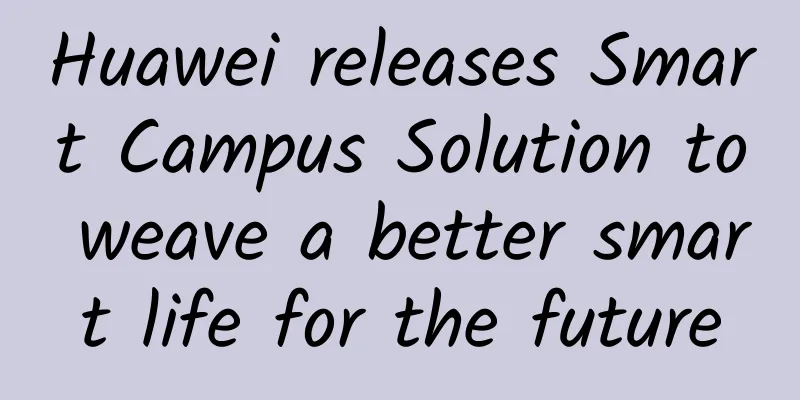What? You still don’t know the best assistant for 5G? Come in!

who I amHello everyone, my name is OpenStack, a typical post-2000s generation, you can also call me classmate O. picture Some people say that 5G is a smarter network, like a Rubik's Cube that can change according to demand and provide the most suitable services, which is inseparable from the role of virtualization. OpenStack is playing an increasingly important role. Let me give you a complete introduction today. Why is it called OpenStack? That's because I am an open source cloud computing management platform project, which consists of multiple components working together to complete specific tasks. Each of my components can run independently, and the source code is open for everyone to view and use for free. picture Therefore, you can think of me as a stack of multiple open components. So, where do I stand in the 5G NFV architecture and what can I do? As we all know, MANO in NFV includes three modules: NFVO, VNFM and VIM. Among them, the role of VIM has always been in a situation of competition among many players. Because of its open source flexibility and rapid evolution, I have gradually broken through the siege and have been chosen as VIM by most manufacturers and users. I connect the upper-level applications and the lower-level general hardware, manage related hardware resources such as computing (CPU), storage (hard disk), network (network card), etc., and provide various applications to complete specific functions, and realize virtualization management of resources with the support of virtual switching software. picture To put it simply, you can think of me as a cloud operating system that allocates hardware resources on demand and makes flexible calls. picture At this point, some people may ask: How do different components work? We can start with the process of creating a virtual machine. After the user obtains authentication information from Keystone, he sends a request to Nova to create a virtual machine. Nova sends an authentication request to Keystone, confirms that the token returned by Keystone is a valid user, and returns a valid authentication. Then, Nova obtains the image file and the network information required to create the virtual machine from Glance and Neutron respectively, and completes the creation of the virtual machine based on this information. picture It may seem a bit abstract, but if you think of this process as assembling a new office computer (which you can think of as the virtual machine mentioned earlier), it may be easier to understand. First, you come to the door of the warehouse and show the authentication information (token) to the guard (Keystone). After the guard agrees, you enter the warehouse. You found the warehouse manager (Nova) and put forward your computer configuration requirements. Then the warehouse manager took the various parts you wanted from the warehouse and brought the operating system image (Glance). picture Finally, I went to the network administrator (Neutron) to open the network for the new computer. picture A new computer (virtual machine) was installed in just a few minutes and can be used as soon as it is turned on. Isn’t it amazing? My past So, where do I get all these magical powers? In fact, since I was born, the place I am most familiar with is the IT (Information Technology) field. In the IT field, many servers are plagued by the same problem: insufficient utilization of resources such as computing, storage, and network bandwidth. What is insufficient resource utilization? For example, During the Spring Festival travel rush, a large number of users will rush to buy train tickets online, causing long queues on the Internet and server overload. If the Ministry of Railways purchases a large amount of server hardware to meet demand during the Spring Festival travel rush, most of the server resources will be idle once the travel rush is over. Is it extravagant? Is it wasteful? At this time, my, classmate O's, advantages were revealed. Compared with fixed physical hardware resources, the function of "flexibly calling resources" allows me to work faster and more conveniently. After discovering that student O had such significant advantages, the telecom operators began to consider letting me enter the CT (Communication Technology) field. However, there are huge differences between the IT and CT fields themselves. How can the advantages be brought into play just like that? Let’s first take a look at the special requirements in the CT field. The CT field requires the provision of convenient and automatic services to achieve elastic sharing of resource pools; it must have a series of high performance features such as high reliability, interoperability, and unified management to adapt to demand. This may seem a bit hard to understand, so let's give another example. For example, ordinary Internet phone services do not require commitment to call performance indicators, while carrier-grade voice services have certain requirements for indicators such as latency and jitter rate. In addition, carrier-grade voice services also require rapid service recovery after a major disaster, a requirement that is not found in the IT field. Although I am reluctant to admit it, my ability is limited and there are still the following gaps between me and the telecom-grade commercial requirements:
Well, okay, I admit that the telecommunications-grade requirements are a bit difficult for me. picture My current situationDo you think I'm giving up? Of course not. In response to the problems of low resource utilization, high cost and lack of flexibility in the traditional telecommunications industry, ZTE upgraded and transformed me and developed my PLUS version - TECS OpenStack, which is a cloud computing and management platform based on OpenStack and integrated with NFV architecture. So, what changes were made in this upgrade and renovation? picture Let's take a look at the software structure diagram of TECS OpenStack, which is mainly composed of a unified API interface, execution domain services, and operation domain services.
picture Having said so much, let me summarize the "armor" added by TECS OpenStack. What are the specific ones?
Although the application requirements of the CT domain and the IT domain are very different, with the help of the above "armor functions", all my shortcomings in the CT domain have been compensated one by one by TECS OpenStack. picture In addition, TECS OpenStack has also added many unique performance enhancements that are not required by the IT domain. These enhancements adapt to the needs of 5G large bandwidth and low latency, and meet the scenarios of 5G edge computing. Meeting the requirements of 5G construction enables TECS OpenStack to be more perfectly applied in the telecommunications field. On the surface, TECS OpenStack only completes the infrastructure management function in the NFV architecture, but once it is combined with the other two parts of MANO, VNFM and NFVO, it can achieve the "smarter network, like a Rubik's Cube that can change according to demand and provide the most appropriate services" mentioned at the beginning. You should know me now. picture |
<<: Global Power over Ethernet Lighting Solutions
>>: Tomorrow’s 5G performance depends on today’s mobile edge
Recommend
Huawei's Li Peng: Stimulate new growth and lead the first year of 5G-A commercialization
[ Barcelona , Spain , February 25, 2024 ] Today...
Zhang Hao from Ele.me: A food delivery guy sent by AI
[51CTO.com original article] On July 21-22, 2017,...
Considerations for designing the integrated cabling system in IDC computer rooms
IDC is the abbreviation of Internet Data Center. ...
Understanding Lossless Networks in One Article
According to OpenAI's data analysis, the amou...
Liu Liehong from the Ministry of Industry and Information Technology: Three suggestions to promote the development of 5G integrated applications
[[399809]] On May 17, at the "2021 World Tel...
spinservers Mid-Autumn Festival Promotion: 1Gbps unlimited traffic server $179/month - dual E5-2630Lv3/64GB/1.6T SSD/San Jose data center
The Mid-Autumn Festival is coming soon. Spinserve...
Why is 5G considered the criterion for the Internet of Things era?
With the advent of the 4G era, the Internet indus...
Programmers need to understand CDN, this article should be enough
I recently learned about edge computing and found...
Serverless Engineering Practice | Quickly Build Kubeless Platform
Quickly build a Kubeless platform Introduction to...
SD-WAN and Operations
Software-defined WAN or SD-WAN is a great example...
Everyone is promoting 5G products and 5G phones. Is 5G really that good? Should I choose a 4G or 5G phone?
The word 5G is "very hot". The topic of...
Aruba Global Research Report Reveals AI Technology Will Become a Powerful Tool to Meet Security Challenges in the IoT Era
On October 26, 2018, Aruba, a Hewlett Packard Ent...
RackNerd: $18.18/year KVM-1GB/24G NVMe/2.5TB/multiple computer rooms available
RackNerd is a foreign VPS hosting company founded...
edgeNAT 50% off in the US West Coast, 30 yuan/month KVM-1GB/20GB/500GB/Los Angeles data center
The tribe has shared news about edgeNAT twice. Th...
Which is faster, 5G or Wi-Fi 6? A hardcore comparison tells you
[[388609]] My wife, who has always been worried a...









